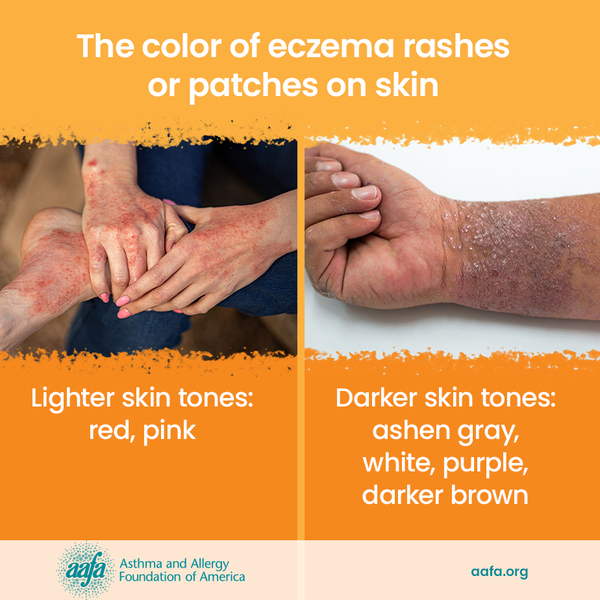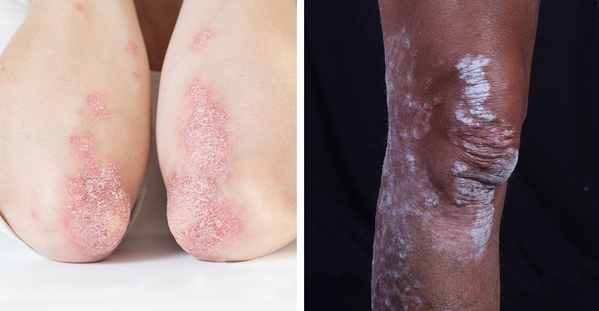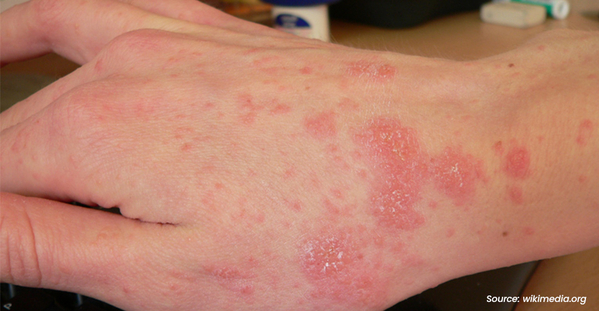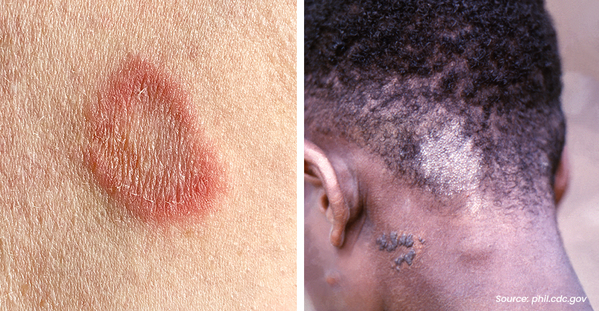Many skin conditions can look similar, so it can be hard to tell the difference. And some conditions, such as eczema, can appear and behave differently for each person. Getting the right diagnosis is important so you can manage it and feel better in your skin.
What Is Eczema?
Eczema is a group of chronic skin conditions that cause your skin to become inflamed, dry, itchy, red, and irritated. There are several types of eczema and most of them are connected to allergies. Atopic dermatitis is the most common type.
There are other skin conditions that can seem similar to eczema. How can you tell the difference? We’ll talk about other skin conditions and how they are different from eczema.

What’s the Difference Between Psoriasis and Eczema?
Psoriasis is a skin condition that causes itchy, scaly rashes. They appear mostly on your knees, elbows, torso, and scalp.

Psoriasis and eczema can both cause itchy, scaly rashes. If you have plaque psoriasis, you may have red, purple, or discolored raised thick areas called “plaques.” Eczema tends to be brown or red and less defined than psoriasis.
What’s the Difference Between Scabies and Eczema?
Scabies is caused by mites that live in your skin. They burrow into your skin, creating small, red, itchy bumps. It spreads from person to person very easily through skin contact.
Eczema is not contagious and is not caused by mites infecting your skin. Eczema is a chronic immune condition caused by a defect in your skin barrier.

What’s the Difference Between Ringworm and Eczema?
Ringworm is a skin infection caused by a fungus. It causes round patches on your skin with red edges that look like a ring. Like scabies, it is contagious.

Ringworm can be confused with a type of eczema called nummular eczema. With nummular eczema, you can have spots with red edges, but the spots are usually not as well-defined as ringworm. It can be caused by a skin injury like a bug bite or scratch, a skin infection, stress, and heat.
What’s the Difference Between a Staph Infection and Eczema?
A staph infection is caused by a bacteria called Staphylococcus aureus. Staph is found on the skin and in the nose of most people. It usually doesn’t cause issues. But when staph infects the skin, it can cause boils, cellulitis, folliculitis, or impetigo. Infected spots may be red and have pus, like a pimple. The area can be warm and painful.
While a staph infection and eczema are different, they can go together. When you have eczema, you are more likely to get staph infections. Staph infections can become serious, so it’s important to take care of your skin and contact your doctor as soon as you think you have a staph infection.

What Can I Do If I Have a Skin Condition?
Eczema can be easily confused with other skin conditions. That’s why it’s important to get a proper diagnosis. The only real way to know if you have eczema or another skin condition is to see an allergist or dermatologist. They can tell you what’s going on with your skin and help you develop a treatment plan.
Medical review: September 2024 by Matthew Greenhawt, MD
Get answers to your asthma and allergy questions on our online forums.
Get Support Now





Comments (0)